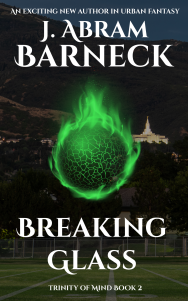I wrote Fire Light in first person. Honestly, in my first draft, I never described my main character. My awesome editor, Sarah Bylund, pointed this out to me. Describing your character is not required. In Jane Austen’s Persuasion, the main character, Anne Elliot is never described. However, I felt like my character Jake needed to be described. Aspects in my story required it.
Description Methods You Should Avoid
The Mirror Scene
When describing your point of view character, don’t do the mirror scene. I remember doing that cliche scene in one of my early stories. Hey, I was sixteen, so lay off!
The Info Dump
An info dump of one or more paragraphs where all you due is describe the main character.
How I Described My Main Character in Fire Light
Here is what I did, let me know if you as a reader or fellow writer like this idea:
I made a list of the physical descriptions of my main character Jake:
- 6’1″ tall
- Strong/with muscles
- Tan skin
- Brown eyes
- Brown hair
Now find places in the novel, usually in chapters one and two, to put this information in without doing an info dump.
I used two methods heavily.
- Showing
- Character contrasting
Showing
Showing means you don’t tell someone, you show them. Let me give you some examples:
“And ten,” Luiz said as he grabbed the bench press bar I was holding and guided it to the rack. “Wow! Three sets of ten at two-twenty-five. Jake, your muscles must be on Miracle-Gro,” Luiz declared. “If you don’t feel sore mañana, then you’re not normal. Some government agency is going to lock you up for some pokin’ and proddin’.”
What did this scene show? It showed that Jake has big muscles, he can lift a lot of weight. Notice, I never say: “Jake is strong with big muscles.” That would be a boring telling sentence.
You also use a simple gesture. Something the character does. Look at this:
I sat up and brushed my sweaty brown hair out of my eyes.
How simple was that. Jake is lifting weights, so naturally his hair is sweaty. All I have to do is throw the “brown” color in and the reader now finds out Jake’s hair color in a showing sentence. Hey, I didn’t realize until just now, but since Jake’s hair is in his eyes, we get sense for how long his hair is, too.
Jake also has to change out of his sweating tank top and put on a t-shirt. So I use this action to slip in some descriptions. When you do this, make it short and make it flow.
“Hey, you want to play Xbox at my house?” I asked as I stripped off my sweaty tank top, exposing my tan, muscular chest.
The t-shirt stretched over my chest and felt a little tighter than I remembered. I’d been putting on muscle fast this summer.
You might be thinking, did he just repeat a description? Don’t we already know Jake is muscular? Yes, but because it isn’t an info dump, and it flows with the story, it is OK to remind the reader multiple times. As long as it flows and doesn’t interrupt the pacing and action, repeated description can be helpful.
Character Contrasting
Character contrasting is the act of describing the point of view character by contrasting them with another character that you are describing. Contrasting the point of view character to a newly introduced character is simple and effective. Each time you introduce a new character, you have this opportunity. What is awesome about this method is that it is easy and it is never cliche. You can do it over and over again in different novels.
Here is a first chapter scene, where Jake protects a sophomore from a bully.
He sure was little, even for a sophomore. He reminded me of myself a few years ago. He had brown hair like mine and the same thin and frail-looking body I had had until just before my freshman year. I wasn’t frail anymore.
Notice that don’t describe Jake much, but we learn this new character is little and frail-looking. We learn he shares Jake’s brown hair. We also learn that Jake isn’t frail anymore. Now look at the last line: “I wasn’t frail anymore.” Do you see how powerful of a line that is for describing Jake?
Next we introduce Luiz.
“Luiz was about five-ten, three inches shorter than me.”
Reader is now aware that Jake is 6’1″. This is character contrasting at its most basic form.
Conclusion
I never stop the story and describe my main character. I never do the cliche mirror scene. I never do an info dump of how my main character’s looks. Yet, I fit it all in with the flow of the story.
What do you think?
Exercises
- Practice the technique described in this article in you story.
2. Cliches are not always as bad as people think they are. You hear over and over again to avoid cliches and yet sometimes there is a reason something is done often. Is it cliche to use a hammer on a nail. Wouldn’t it be more unique to use a wrench? No, it wouldn’t. Use the hammer! The same can often be said about some cliches in writing. It may be the right tool for the job, so use it.
Break the cliche. How could you use the mirror scene without being cliche? Give it a try.

I like your character contrasting technique. It’s like two character descriptions in one!